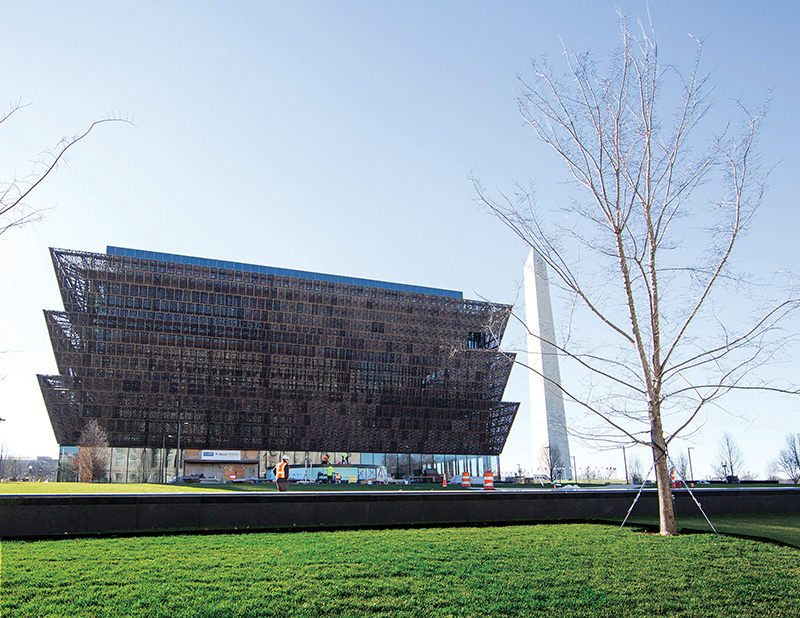
For years I’d heard people expressing doubts as to whether the Smithsonian Institution actually needed a tenant devoted to black American history and culture. These misgivings didn’t come from whites only, but from black and brown people too. The more knowledgeable—or, anyway, least blinkered—of such skepticism circled around whether such a place wouldn’t be redundant since there was already a National Museum of American History on the National Mall, where you could find some of the same things the newer place was going to display. Some—and again, these weren’t only whites—even wondered if there was (and I wince at this disclosure) enough such history to justify the approximately four hundred thousand square feet of real estate being set aside near the Washington Monument for what is finally opening this September as the National Museum of African American History and Culture.
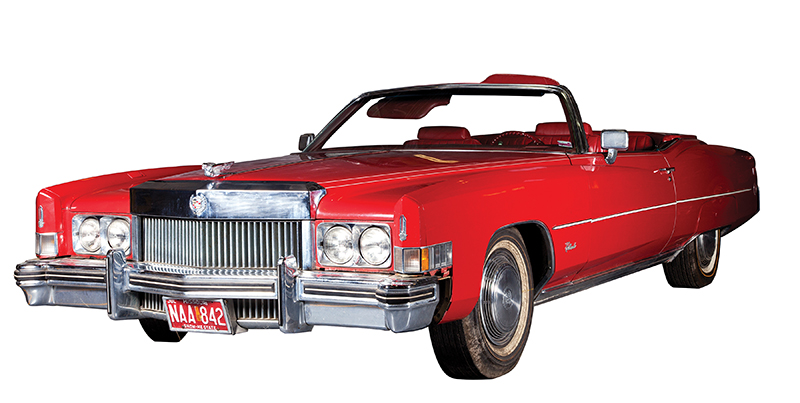
But then, a museum earns its worth in large part by how much it demands of the imagination. And if the NMAAHC met this standard by provoking the skeptics before breaking ground in February 2012, the first waves of visitors will likely find themselves gazing at its rich, illuminating, and at times heartbreaking collection with wonder and incredulity. While a few hard-core spoilsports may still wonder what an African-American museum of such ambition and scope is doing here, they will be overpowered by those who from this season forward will wonder how all of us—doubters and even haters alike—have managed to exist in this country without a National Museum of African American History and Culture.
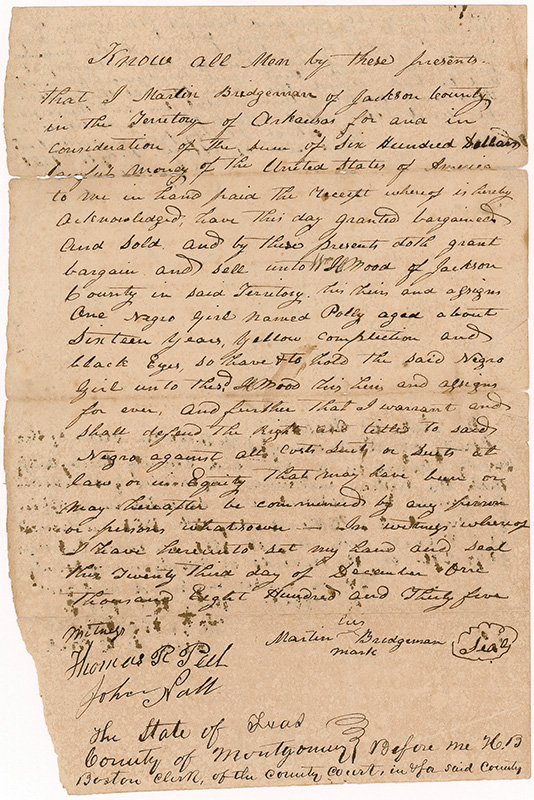
Official copy of a receipt for the sale of a Negro girl named Polly, age sixteen, for 0, December 23, 1835. This bill of sale transferred ownership from Martin Bridgeman to William H. Mood, both from Jackson County, territory of Arkansas. Gift of Candace Greene. 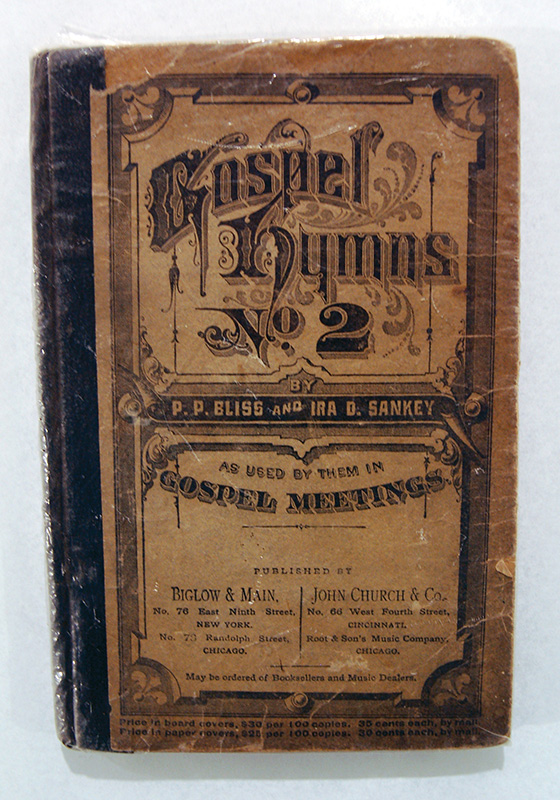
Gospel Hymns No. 2, by P. P. Bliss and Ira D. Sankey, Harriet Tubman’s hymn book, c. 1876. Gift of Charles L. Blockson.
Put another way: if there are any visitors who approach this museum believing that African Americans are people for whom things have been either done for or done to, they should, if properly open to its copious and shrewdly organized collection, be disabused of this notion. They should emerge convinced of what founding director Lonnie G. Bunch has been saying in as many venues (and with as many variations) as he is able: that blacks were not mere afterthoughts in the democratic imagination, but active collaborators in both enhancing this ideal and in creating their nation, and that their story, moreover, isn’t just an American story, but the American story.

The building’s exterior begins this lesson. If you walk from the United States Capitol down the middle of the National Mall directly toward the Washington Monument, you will see to the right—toward the corner of Constitution Avenue and 14th Street—the new ten-story museum (five underground), its exterior shrouded with a glistening bronze-tinted layer of thirty-six hundred cast-aluminum panels making up its “Corona.” Designed by David Adjaye, whose credits include Oslo’s Nobel Peace Centre and Denver’s Museum of Contemporary Art, the building’s shape is inspired by the Yoruban Caryatid, a wooden gural column topped by a crown, or corona. If the basic shape signifies the West African origins of black America, each panel’s ornate design evokes nineteenth-century ironwork wrought by enslaved artisans whose legacy can still take one’s breath away in parts of the South, especially New Orleans. Already, this institution is telling you that as Africans created the artifacts reflecting their collective soul, their descendants, even under circumstances that deprived them of their own humanity, called upon their artistic resources to make things of utility, beauty, and resilience.
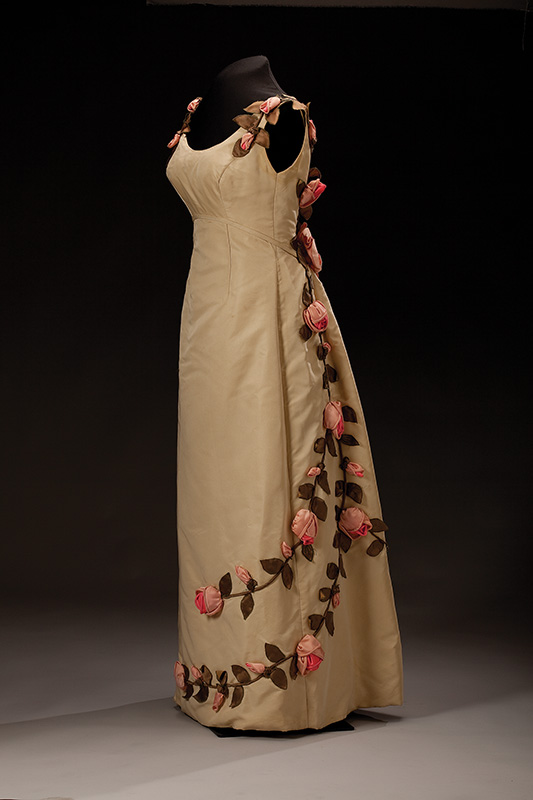
Silk and satin American Beauty dress designed by Ann Lowe (1898–1981), c. 1958–1960, from the Black Fashion Museum Collection. Bailey gift. 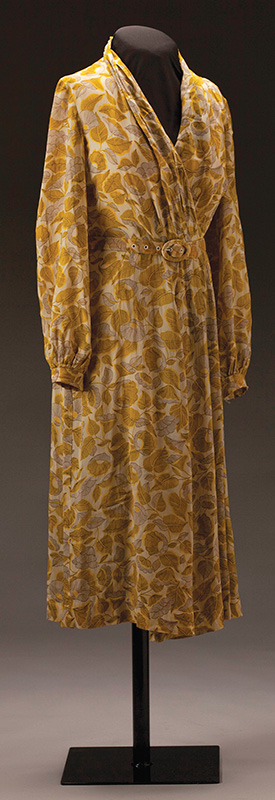
Dress made by Rosa Parks (1913–2005), c. 1955, shortly before she was arrested for not giving up her seat on a segregated bus, from the Black Fashion Museum Collection. Gift of Joyce A. Bailey.
And that, as they say, is only the beginning. It is possible to feel the power and depth of African Americans’ persistence, advancement, and creativity throughout the museum, even during a media tour this past spring when many of the museum’s contents were still under wraps, including Chuck Berry’s red Cadillac and George Clinton’s Parliament-Funkadelic Mothership. You’ll see them in their glory after the doors are opened to all. You will also need to take your time getting to them. This museum has a course for you to, as Berry might have put it, “motorvate” through its corridors, and its curators, archivists, and designers say it starts at the bottom—specifically, in the part of the museum its officials call “The Crypt,” the lower portion of a three-tiered concourse that comprises the museum’s “History” portion.
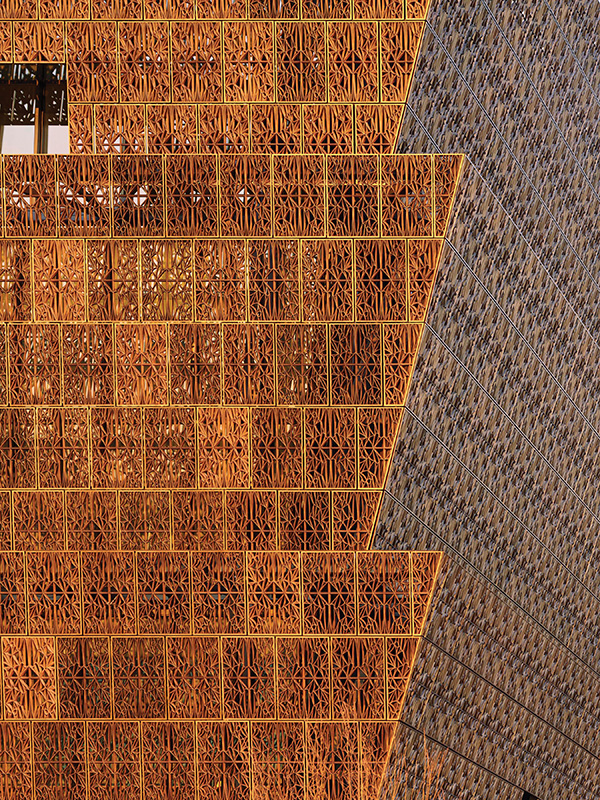
Think of each tier as a single volume in an epic narrative. The first, entitled “Slavery and Freedom,” is anchored by a weather-board cabin, brought piece by piece from its point of origin, the Point of Pines Plantation on South Carolina’s Edisto Island, and rebuilt as it would have looked in the early nineteenth century—when it was inhabited by slaves living on land where an experiment in human liberty had been established only a few decades before. As you walk up a ramp toward the second tier, “Defending Freedom, Defining Freedom: Era of Segregation 1876–1968,” you see a more commodious log cabin from Jonesville (now Poolesville), Maryland, originally built by and for freed slaves during Reconstruction about 1874. Here, as elsewhere, visitors measure the terms of progress; what’s outside may look better, what’s inside may be no better. They’ll be able to walk into both to see for themselves. They will also be able to walk into a fully restored forty-four-seat railway car that traveled through the South of the 1940s and see firsthand how racial segregation was enforced on public transportation with seats designated only for passengers of color.
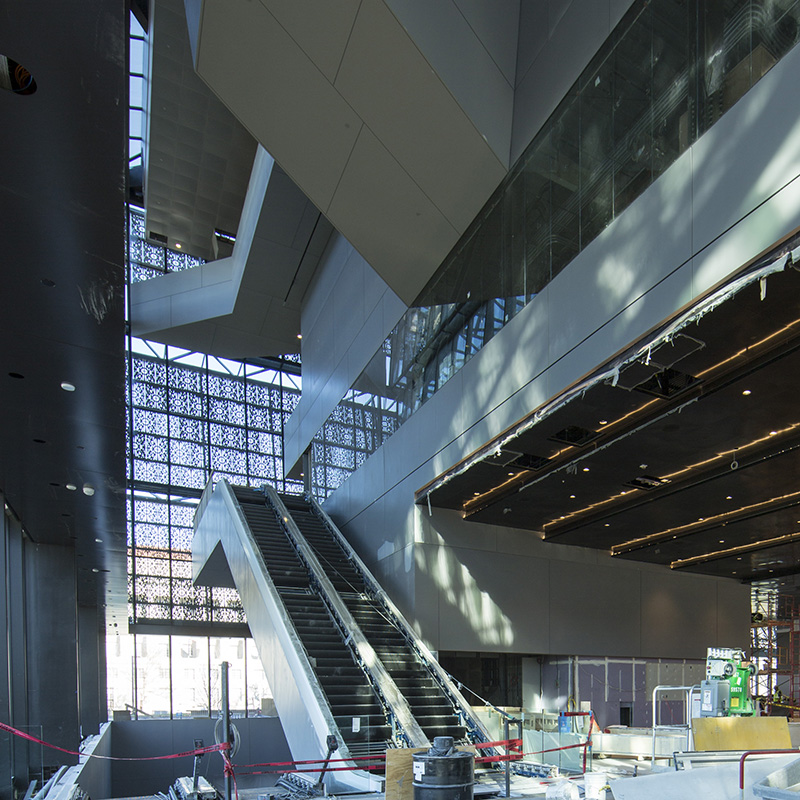
Generations who have never experienced “Jim Crow—much less know what, or who, it was—will be encouraged to imagine what it was like not to be able to sit wherever you wanted on a train, and that there was nothing you could do to change this circumstance. Those old enough to have experienced such routine and demeaning treatment will likely have more profoundly personal reactions. And then there are those who were alive and alert during those years of institutionalized segregation who never gave such customs a second thought. What, one wonders, will be going through their minds when they wander through this rail car? It is one thing to have read stories or watched newsreels. It is another to be present, bear witness, in a remnant from those distant years. It’s enough to provoke the deepest contemplation—and there are plenty of spaces in the museum that will offer visitors of every generation the opportunity to think and talk everything over.
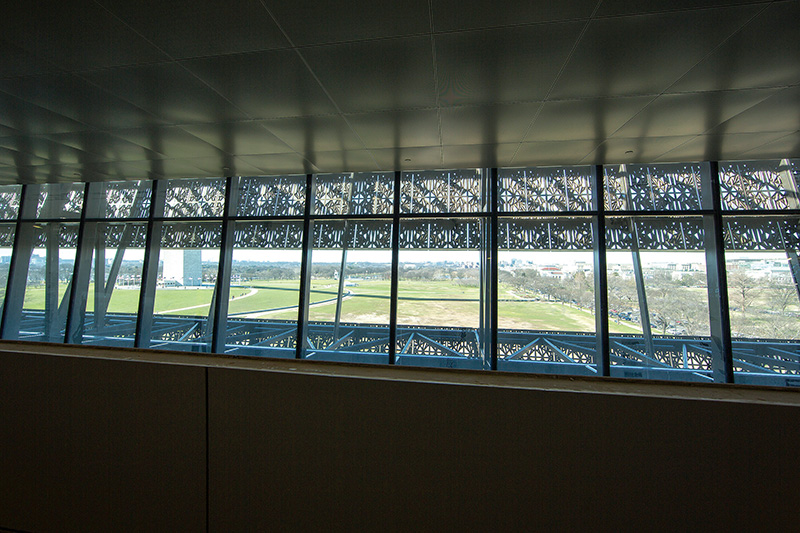
And by “everything” I don’t just mean the items as big as the Army Air Corps biplane hanging between the second and third tiers that actually rolled off a Wichita assembly line in 1944 and was then shipped to Moton Field in Alabama to help train the fabled Tuskegee Airmen. Revelation and illumination can be found in such varied items as Emmett Till’s casket; Harriet Tubman’s shawl and hymnal; a pocket-size copy of the Emancipation Proclamation carried by Union soldiers to inform their black comrades of their freedom; the ensemble worn by Marian Anderson for her epochal 1939 Lincoln Memorial recital; a Bible carried by Nat Turner; a dress made by Rosa Parks, and so much more.
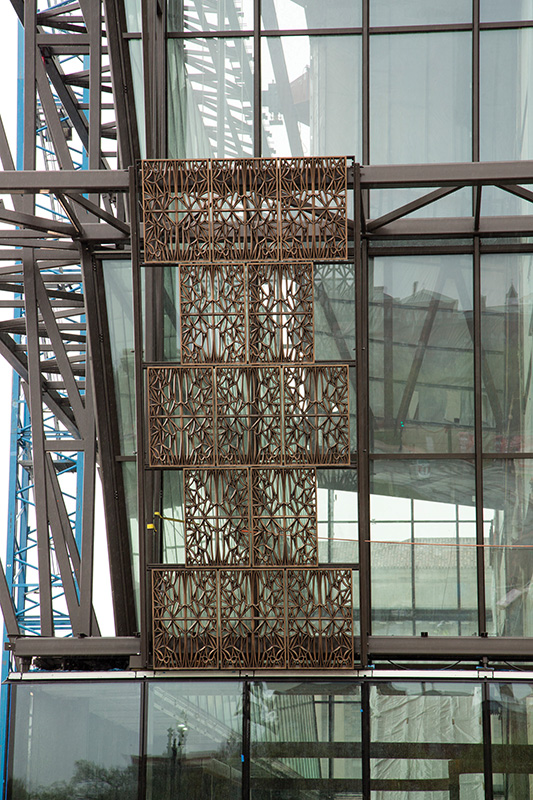
Indeed, the most intriguing item in the “Slavery and Freedom” gallery may be one of the smallest (and oldest): an amulet fashioned by the West African Lobi tribe to resemble a shackle so that it could be smuggled aboard a slave ship as protection from evil. It may not have worked for those Lobi who were captured and taken across the Atlantic. But knowing such an amulet existed and has been recovered for display in this museum somehow reaffirms the museum’s potential to reshape a nation’s perception of itself with as much visionary energy as Martin Luther King Jr. had just a few blocks away more than a half-century ago.
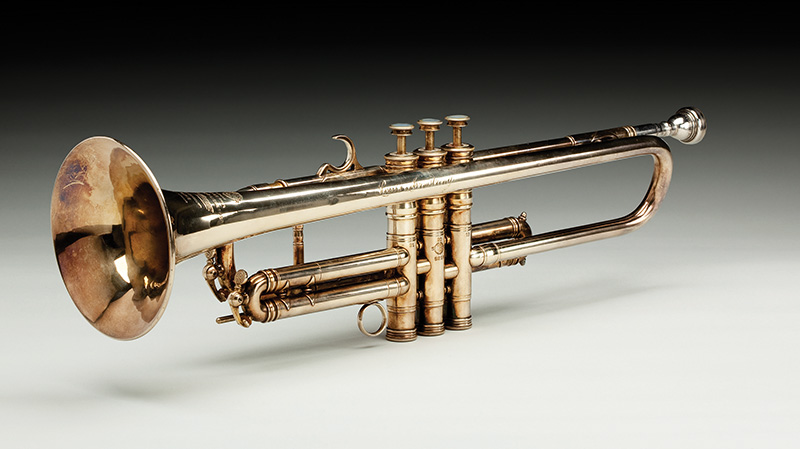
Brass and gold trumpet crafted by Henri Selmer specifically for Louis Armstrong in Paris, 1946. 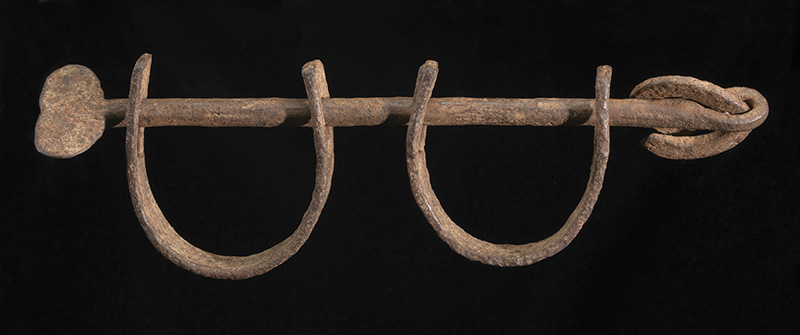
Wrought-iron ankle shackles, before 1863, used to restrain enslaved people aboard ships crossing the Atlantic from Africa to the Americas.
The third tier of the History section, “A Changing America: 1968 and Beyond,” has the daunting mandate of charting the highs and lows of black American life from King’s assassination to the 2012 re-election of Barack Obama as president and to the emergent “Black Lives Matter” movement. Just about everything in between is also comprehensively covered with artifacts: picket signs and posters representing the Black Panther Party and the Resurrection City protest that King had conceived and his successors carried out on the mall in 1968; exhibits detailing the plays, poems, novels, and other works inspired by the Black Arts Movement of the 1960s and 1970s as well as the ways in which black demographics shifted from the cities to the suburbs and, in some cases, back to the southern states abandoned during the great northern and western migrations of the early twentieth century.
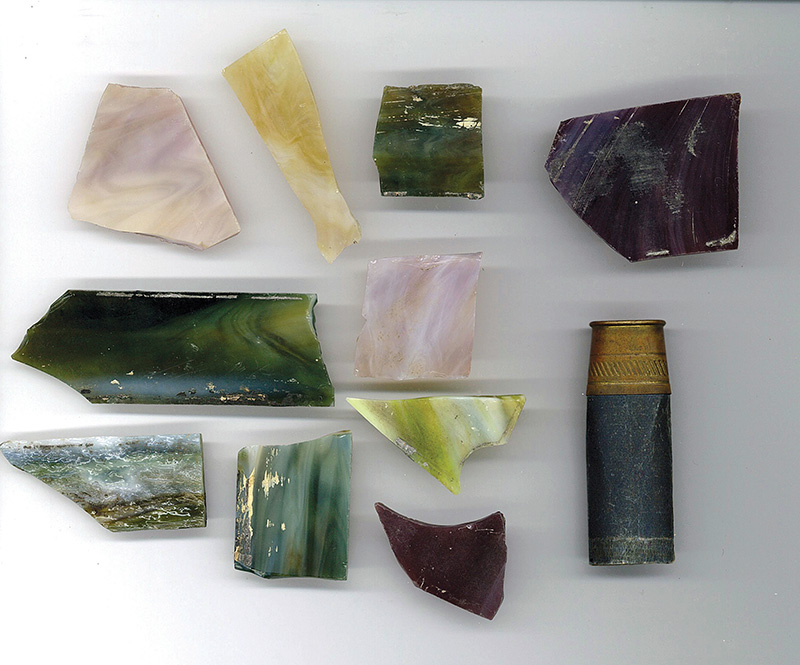
The purpose here and elsewhere isn’t merely to amaze (although it does that a lot), but to instruct—to make visitors think about what they may have either forgotten or have never understood. The aforementioned “1968 and Beyond” exhibit doesn’t discuss simply Black Power and its complex legacy for African Americans, but also its influence on other movements for self-determination, from the resurgence of feminism to gay rights and assertions of Latin- and Asian-American pride. And when you ascend to the fourth floor, where the “Culture” part of the museum is given full play with the aforementioned Cadillac and Mothership, along with galleries about music, art, literature, theater, dance, comedy, food, and scientific innovation, you’re as much aware of the contexts through which black culture, popular and otherwise, expanded, shifted, and (the word can’t be avoided) overcame obstacles imposed from within and without the African-American community. You don’t, for example, just bask in the audacity of Chuck Berry driving that Caddy across the stage of a Saint Louis theater. You’re also made aware that Berry was barred from entering that same theater when he was a child.
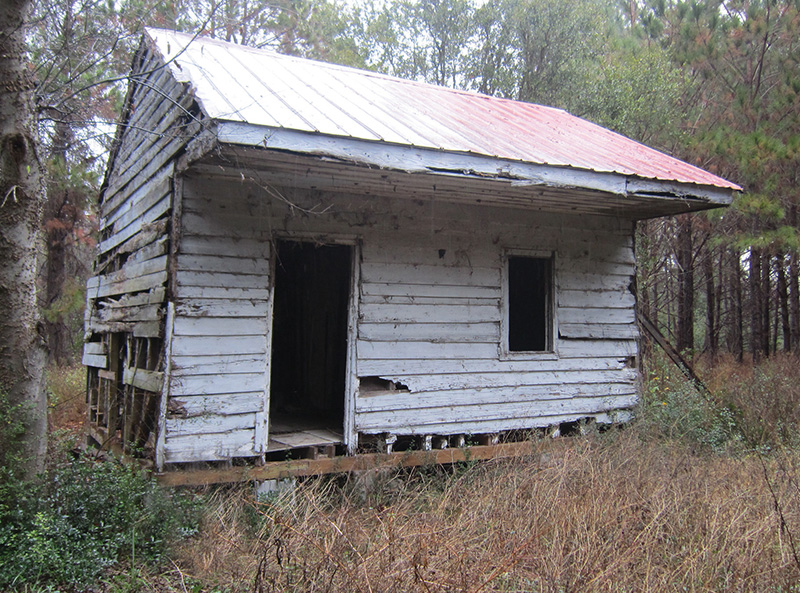
When you have ascended this mountain of struggle, achievement, and enlightenment, you’ll reach the top floor from which you can look out over at the Mall and the monuments, including those devoted to King, Washington, Jefferson, and Lincoln. You will need the space to reflect on everything you’ve seen, absorb the magnitude of the black presence in the nation’s life and soul—and realize, if you hadn’t before, how much that presence deserves such prominent commemoration only a block or so from the White House. How, indeed, could we have gone so long without such a place? How far and for how long would this nation have lasted without its African Americans, whether as slaves or as citizens?
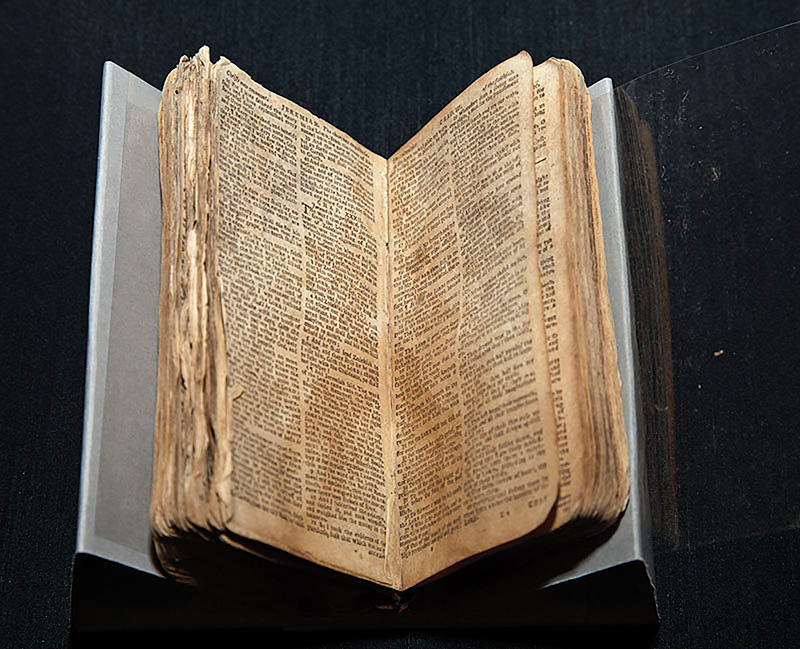
GENE SEYMOUR has written about jazz, film, and other distractions for more than twenty years. He lives in Philadelphia and is at work on a collection of essays.
